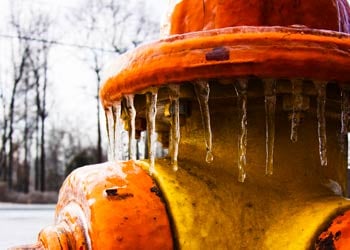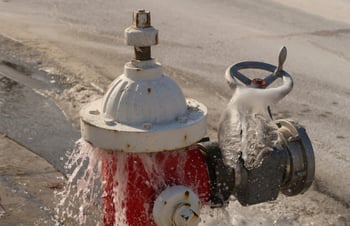Winter Hydrant Maintenance: Thawing Frozen Hydrants
- Home
- Team EJP Blog
- Winter Hydrant Maintenance: Thawing Frozen Hydrants
- Jan 10, 2020 9:20:28 AM
- Everett J. Prescott
With Old Man Winter setting solidly in for the season, your water utility is probably facing some serious problems. However, one of the most life-threatening issues that your utility can face is frozen hydrants. Instead of simply being an inconvenience for your customers, it can be a real problem that can threaten lives when a fire breaks out. But that doesn't mean that you can just hit your hydrants with anything to get them to thaw when they're frozen. Using the right techniques ensure that your hydrants can be thawed in a safe, damage-free manner. Here's how:
 Even if you have a regular maintenance and testing program in line with your water utility's hydrants, the first sign of trouble you'll often see is when your hydrant comes up as inoperable. Thawing a hydrant takes specific techniques to get the job done right. It's tempting to just turn on a propane torch to heat up the metal, taking this approach with your water utility's hydrants can have serious consequences. As the first bits of water heat up, they can quickly turn to steam, building up significant pressure inside your fire hydrants. This can both damage the hydrant and hurt your workers at the same time. It can also damage o-rings & gaskets.
Even if you have a regular maintenance and testing program in line with your water utility's hydrants, the first sign of trouble you'll often see is when your hydrant comes up as inoperable. Thawing a hydrant takes specific techniques to get the job done right. It's tempting to just turn on a propane torch to heat up the metal, taking this approach with your water utility's hydrants can have serious consequences. As the first bits of water heat up, they can quickly turn to steam, building up significant pressure inside your fire hydrants. This can both damage the hydrant and hurt your workers at the same time. It can also damage o-rings & gaskets.
The safe way of thawing a frozen hydrant uses steam, so that your hydrant's temperature doesn't exceed the boiling point. This helps prevent the kind of serious damage that can happen during rapid thawing. Team EJP takes care of these issues in our hydrant and valve maintenance service by creating steam with an open flame in a Bunsen burner, which is then directed to the hydrant to melt any ice causing problems. After the valve is able to be operated safely, the water flowing through the hydrant finishes up the thawing process. After we've completed thawing a hydrant, we pump it out, test it to ensure that there are no leaks and that everything is working well, and the hydrant is then able to be placed back into regular service.
 The best way to avoid having issues with frozen hydrants is by having regular testing, maintenance and service performed on your hydrants, even through the worst cold of winter. To check your hydrants for potential problems, start by opening your access port without operating the valve. Drop a weighted line inside all the way to the bottom, then remove it and check if the line has become wet when it's removed. If your line is wet, pump out the hydrant, then wait a few minutes and check the hydrant again for standing water. A dry line means you can just go on to the next hydrant, but a wet line means more water has leaked in, requiring repairs or replacement to prevent the hydrant from freezing up again during the worst of winter's cold weather.
The best way to avoid having issues with frozen hydrants is by having regular testing, maintenance and service performed on your hydrants, even through the worst cold of winter. To check your hydrants for potential problems, start by opening your access port without operating the valve. Drop a weighted line inside all the way to the bottom, then remove it and check if the line has become wet when it's removed. If your line is wet, pump out the hydrant, then wait a few minutes and check the hydrant again for standing water. A dry line means you can just go on to the next hydrant, but a wet line means more water has leaked in, requiring repairs or replacement to prevent the hydrant from freezing up again during the worst of winter's cold weather.
By having an understanding of how you should safely thaw, maintain and service your water utility's fire hydrants, you can rest easy in the knowledge that your fire hydrants are going to be ready for action whenever they're needed, especially during an emergency. Properly functioning hydrants in the winter equals lives and property saved during a fire, which is a common problem in winter's cold. If your water utility has too much going to with your crew to see to a regular testing and maintenance schedule, Team EJP is ready to help you out. Our valve and hydrant maintenance service can either catch you up on maintenance or stay caught up. Please feel free to contact us today for details.








